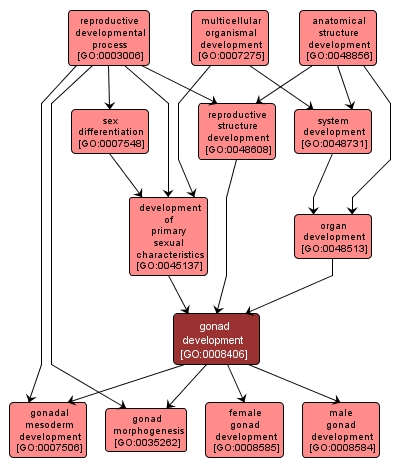GO TERM SUMMARY
|
| Name: |
gonad development |
| Acc: |
GO:0008406 |
| Aspect: |
Biological Process |
| Desc: |
The process whose specific outcome is the progression of the gonad over time, from its formation to the mature structure. The gonad is an animal organ that produces gametes; in some species it also produces hormones. |
|

|
INTERACTIVE GO GRAPH
|














